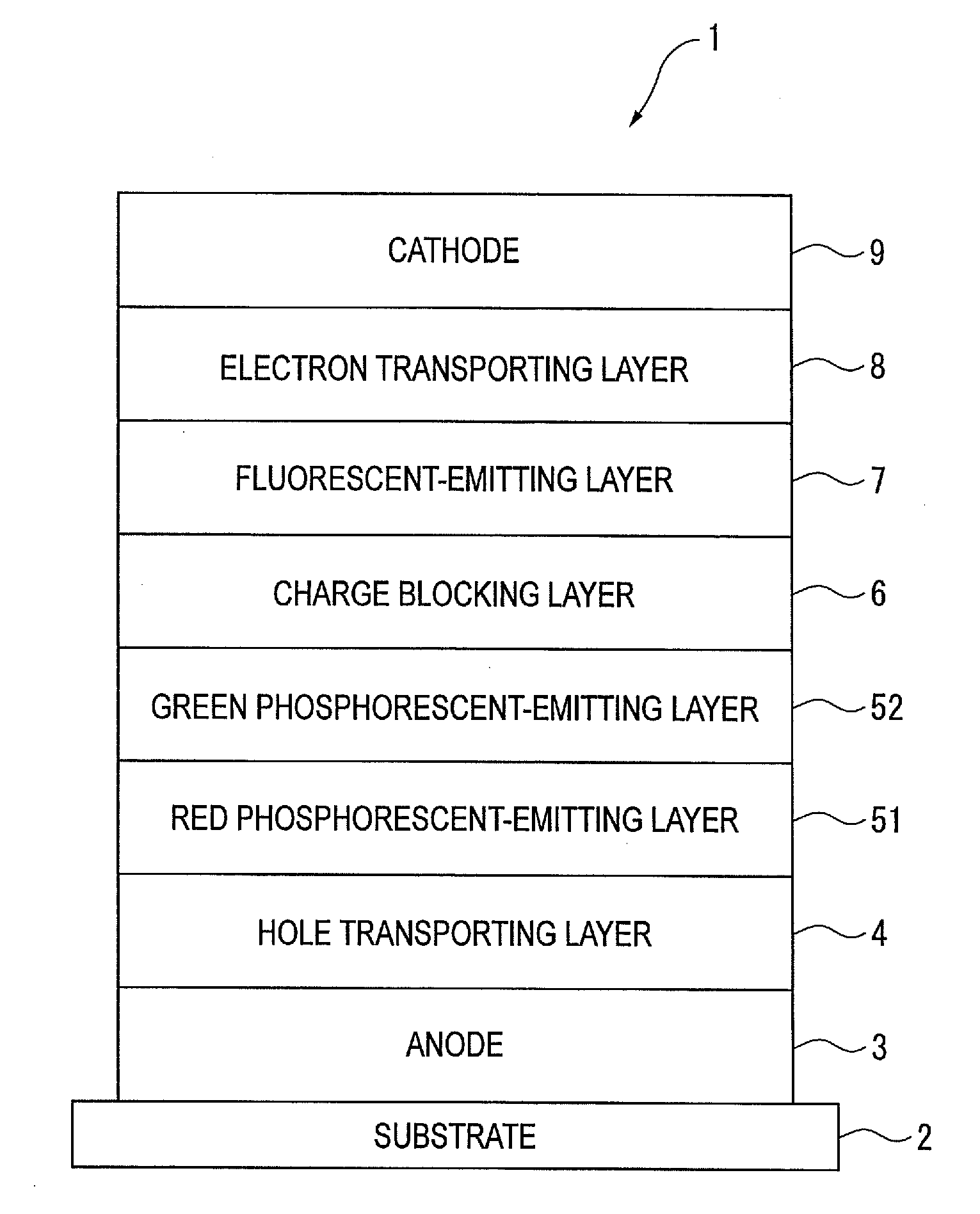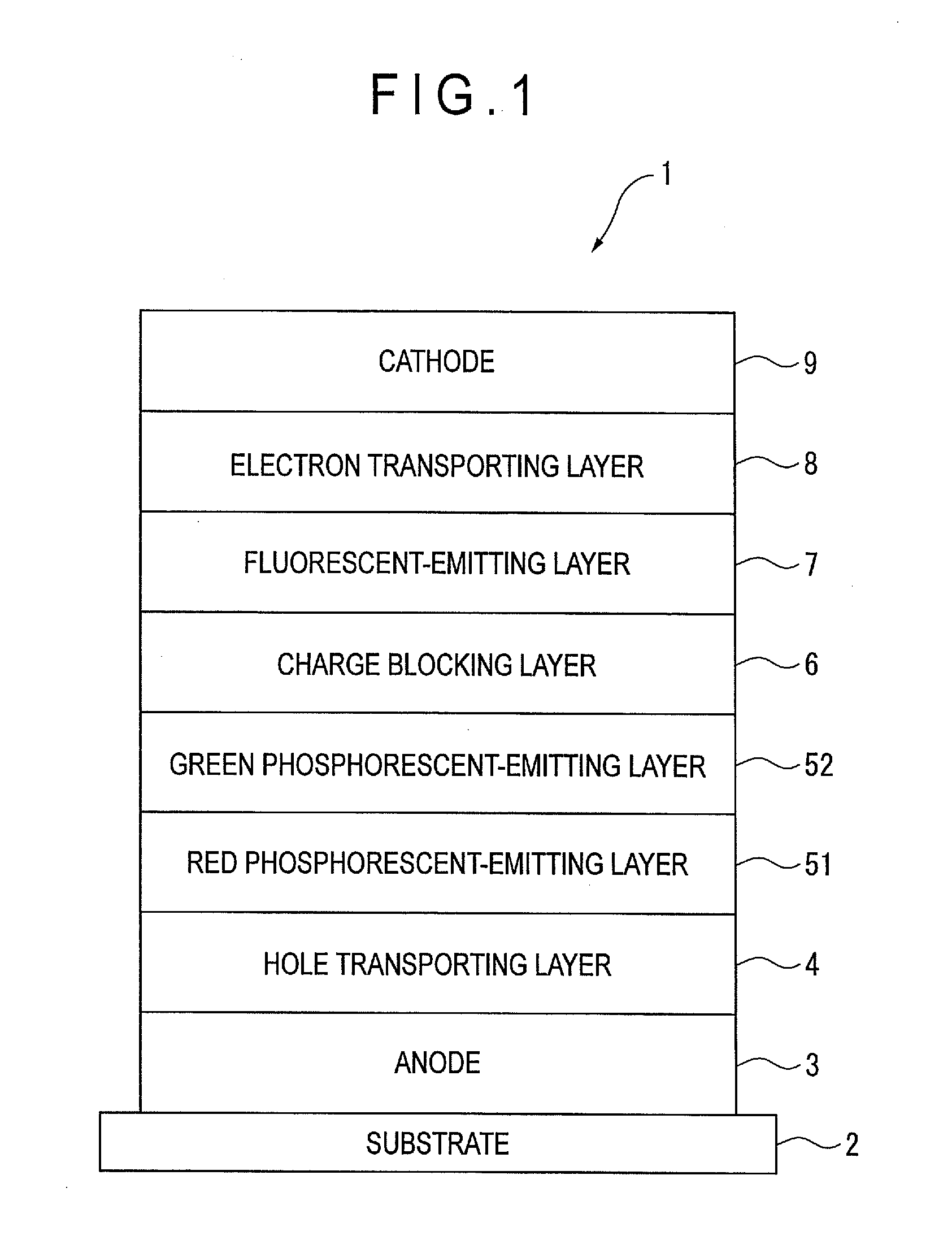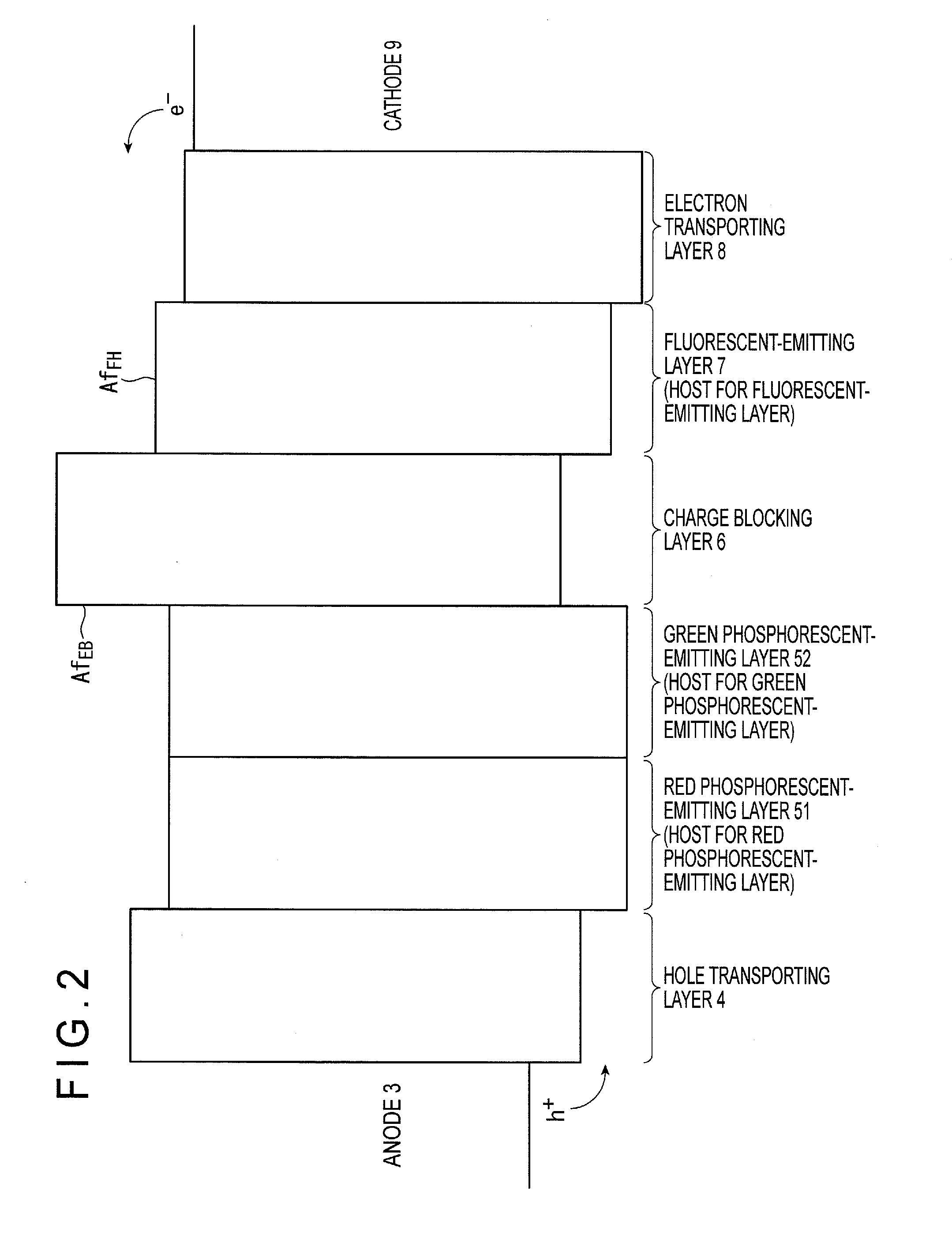Organic el device
a technology of organic el and light source, which is applied in the direction of electroluminescent light source, chemistry apparatus and processes, and compositions of light source, can solve the problem of not being able to achieve high luminous efficiency of organic el devices, and achieve high luminous efficiency, high efficiency, and low cost
- Summary
- Abstract
- Description
- Claims
- Application Information
AI Technical Summary
Benefits of technology
Problems solved by technology
Method used
Image
Examples
first exemplary embodiment
[0201]The first exemplary embodiment of the invention will be shown in the drawings and described with reference to numerals allotted to components shown in the drawings.
(1) Arrangement of Organic EL Device
[0202]The followings are representative arrangement examples of the organic EL device:[0203](a) anode / emitting layer / cathode;[0204](b) anode / hole injecting layer / emitting layer / cathode;[0205](c) anode / emitting layer / electron injecting layer / cathode;[0206](d) anode / hole injecting layer / emitting layer / electron injecting layer / cathode;[0207](e) anode / organic semiconductor layer / emitting layer / cathode;[0208](f) anode / organic semiconductor layer / electron blocking layer / emitting layer / cathode;[0209](g) anode / organic semiconductor layer / emitting layer / adhesion improving layer / cathode;[0210](h) anode / hole injecting layer / hole transporting layer / emitting layer / electron injecting layer / cathode;[0211](i) anode / insulating layer / emitting layer / insulating layer / cathode;[0212](j) anode / inorganic...
second exemplary embodiment
[0445]As shown in FIG. 4, an organic EL device of the second exemplary embodiment includes the anode 3, the hole transporting layer 4, the fluorescent-emitting layer 7, the charge blocking layer 6, the green phosphorescent-emitting layer 52, the red phosphorescent-emitting layer 51, the electron transporting layer 8 and the cathode 9, which are sequentially provided on the light-transmissive substrate 2.
[0446]Materials and manufacturing process are the same as in the first exemplary embodiment, but the the second exemplary embodiment is different from the first exemplary embodiment in the following points.
[0447]The charge blocking layer 6 blocks the holes injected into the fluorescent-emitting layer 7 from being injected toward the charge blocking layer 6 from the fluorescent-emitting layer 7, and injects the electrons from the phosphorescent-emitting layers 51 and 52 into the fluorescent-emitting layer 7.
[0448]Specifically, a triplet energy gap EgPD of the phosphorescent dopant, a ...
example 1
[0475]A glass substrate (size: 25 mm×75 mm×1.1 mm) having an ITO transparent electrode (manufactured by Geomatec Co., Ltd.) was ultrasonic-cleaned in isopropyl alcohol for five minutes, and then UV (Ultraviolet) / ozone-cleaned for 30 minutes.
[0476]After the glass substrate having the transparent electrode was cleaned, the glass substrate was mounted on a substrate holder of a vacuum deposition apparatus, and a hole transporting layer was initially formed by vapor-depositing 50-nm-thick TCTA(4,4′,4″-Tris(carbazol-9-yl)triphenylamine) to cover a surface of the glass substrate where a transparent electrode line was provided. The hole mobility of TCTA was 4×10−4 cm2 / Vs in an electric field of 10−4 to 10−6 V / cm.
[0477]A red phosphorescent-emitting layer was obtained by co-depositing CBP(4,4′-bis(N-carbazolyl)biphenyl) used as the red phosphorescent host and PQIr used as the red phosphorescent dopant onto the hole transporting layer to be 6 nm thick. The concentration of PQIr was 1 mass %.
[...
PUM
| Property | Measurement | Unit |
|---|---|---|
| thickness | aaaaa | aaaaa |
| wavelength | aaaaa | aaaaa |
| emission of a wavelength | aaaaa | aaaaa |
Abstract
Description
Claims
Application Information
 Login to View More
Login to View More - R&D
- Intellectual Property
- Life Sciences
- Materials
- Tech Scout
- Unparalleled Data Quality
- Higher Quality Content
- 60% Fewer Hallucinations
Browse by: Latest US Patents, China's latest patents, Technical Efficacy Thesaurus, Application Domain, Technology Topic, Popular Technical Reports.
© 2025 PatSnap. All rights reserved.Legal|Privacy policy|Modern Slavery Act Transparency Statement|Sitemap|About US| Contact US: help@patsnap.com



